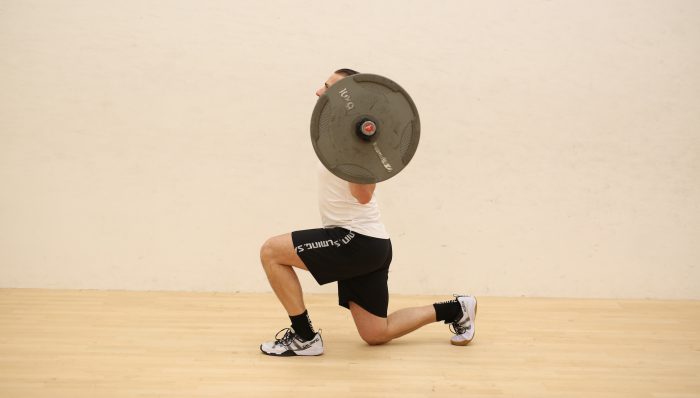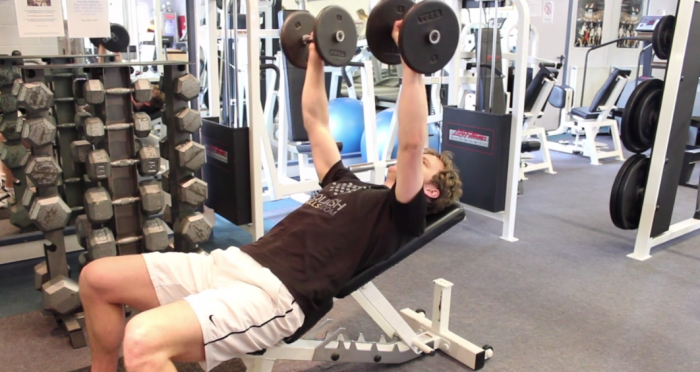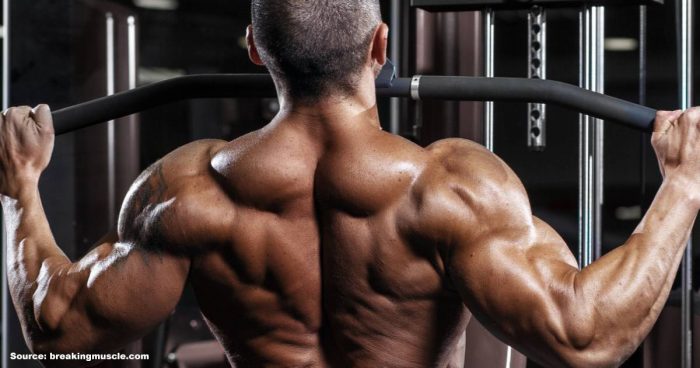Athletic training methods have become ever more scientific over the past 20 years, and coaches are placing an ever-increasing focus on any small factor that may be able to improve their athletes’ performance by even the slightest percentage in competition – even well-established training methods have been re-examined in greater and greater detail to draw every possible degree of benefit from them.
Against this backdrop, traditional weight training/resistance training has been increasingly studied and researched, in an attempt to optimise training routines and their specificity for sport. Gone are the days when athletes and coaches dismissed weight training as only for bodybuilders and perpetuated myths of these sessions causing unwanted bulking and negative effects on athletes flexibility – the vast majority of elite-level athletes today incorporate resistance training as an integral part of their programme.
There are many benefits to the elite squash player from a properly structured resistance training programme, and a number of these will also be relevant to the amateur club player. In this article, we’ll be looking at what the main benefits of weights training are (and their significance to squash), and then in part 2, we’ll explore how to structure an appropriate programme and select the correct exercises for inclusion in your training.
So in terms of recognising the value of resistance training for the squash player, we need to look first at the different outcomes that can be produced from a well-structured resistance training programme.
In respect to the design and implementation of properly constructed physical conditioning programmes, an oft-used acronym is F.I.T.T. – Frequency-Intensity-Time-Type. In relation to resistance training, this breaks down into how often you train, how hard you train (amount of resistance), how long you train for (reps, sets, rest periods), and which exercises you use. So depending on the manipulation of these variables within a session, the resultant gains from a resistance training programme will occur in 4 primary areas:
Muscular strength
Muscular strength is the base of all resistance training programmes, and to a greater or lesser degree strength will be increased in any properly structured programme whatever your primary goal might be. In terms of athletes, pure strength training is generally the reserve of powerlifters and strongman competitors, but it’s inclusion as a training focus should be considered an integral part of any weights training programme – the stronger your muscles are on a foundational level, the more potential you will have to develop increased endurance and power, two vital elements to any squash player (discussed further below).
Strong muscles are also generally more efficient muscles, meaning less energy cost for most movements and actions. Strong muscles are also going to be more resistant to injury, of great importance to all squash players whether elite full-time professional or once a week social hacker!
Muscular power
 A further function of muscular strength, power is the ability to generate force as fast as possible. So where an athlete might be very strong in terms of generating maximal force, if the rate of their force development is too slow then they will never be able to produce much power – and power is vital in sports such as squash where the ability to explode from the T, change direction, accelerate quickly, and make fast dynamic movements around the court are crucial to high-level performance.
A further function of muscular strength, power is the ability to generate force as fast as possible. So where an athlete might be very strong in terms of generating maximal force, if the rate of their force development is too slow then they will never be able to produce much power – and power is vital in sports such as squash where the ability to explode from the T, change direction, accelerate quickly, and make fast dynamic movements around the court are crucial to high-level performance.
Training for muscular power is carried out at high velocities, and usually incorporates multiple muscle groups in large compound movements – these movements need to be adapted to be specific to the sport in question, so in squash these will be explosive triple extensions, and dynamic single leg lunge type actions to replicate movements to and from the four corners of the court.
Muscular endurance
 Whilst many squash players of even a very social level often incorporate some kind of additional stamina work into their playing/training, there are far fewer players who incorporate specific training exercises to help increase the endurance of the actual specific muscles themselves, to go alongside the general improvements in the function of their cardiovascular systems gained in their aerobic and anaerobic based work. By using lighter weights and higher rep ranges, endurance in the muscles can be increased to allow for a greater resistance to fatigue and an ability to keep functioning at an optimal level for longer – whatever your strength/power output is in your movements, if you can only produce that output for very short durations then you’re going to be limited in your effectiveness.
Whilst many squash players of even a very social level often incorporate some kind of additional stamina work into their playing/training, there are far fewer players who incorporate specific training exercises to help increase the endurance of the actual specific muscles themselves, to go alongside the general improvements in the function of their cardiovascular systems gained in their aerobic and anaerobic based work. By using lighter weights and higher rep ranges, endurance in the muscles can be increased to allow for a greater resistance to fatigue and an ability to keep functioning at an optimal level for longer – whatever your strength/power output is in your movements, if you can only produce that output for very short durations then you’re going to be limited in your effectiveness.
Muscular endurance work has high relevance to many sports, particularly high-intensity interval based sports such as squash, and repeated effort training methods such as circuit sessions can be a great way to develop this attribute.
Muscular size (Hypertrophy)
 Perhaps the most traditional expectation of most people partaking in a weight training programme is that they will gain size and get ‘big muscles’. Whilst there will likely be some increase in a muscle’s cross-sectional size in any weight training programme, this is rarely an appropriate goal in and of itself for most competitive athletes – particularly in a sport such as squash that requires quick and efficient movement, which is obviously not helped by the addition of unnecessary bulk. Increasing muscle size just for the sake of it is of little productive benefit outside of sports like rugby or basketball, where certain positions may require increased bulk for stability and resistance to opponents body contact.
Perhaps the most traditional expectation of most people partaking in a weight training programme is that they will gain size and get ‘big muscles’. Whilst there will likely be some increase in a muscle’s cross-sectional size in any weight training programme, this is rarely an appropriate goal in and of itself for most competitive athletes – particularly in a sport such as squash that requires quick and efficient movement, which is obviously not helped by the addition of unnecessary bulk. Increasing muscle size just for the sake of it is of little productive benefit outside of sports like rugby or basketball, where certain positions may require increased bulk for stability and resistance to opponents body contact.
A properly designed weights training programme targeting strength/power/endurance need not result in significant size gains – reps/sets/frequency in a training programme can be properly adjusted to focus more on neuromuscular and muscle function gains as opposed to stimulating too much muscle growth (although there will always be some crossover). Certainly, the early gains in most training programmes tend to be predominantly neuromuscular in nature anyway, explaining why we usually get stronger before we get bigger.
One of the biggest problems in many novices attempting to incorporate weights into their training regimes, is that most generic programmes found in the public domain (and even those designed by your average gym instructor or personal trainer), are often heavily influenced by old bodybuilding principles and traditions of high volume sessions focusing on increasing muscle bulk, and are thus of very little benefit to squash performance. It is important for this reason to try to ensure that you get proper advice in the design and content of your programme from a suitably certified Strength & Conditioning trainer with a background in working with athletes where possible, to really maximise your training gains – unfortunately the standard instructor in a commercial gym is often not appropriately qualified or experienced enough to do this.
Gary Nisbet
B.Sc.(Hons), CSCS, NSCA-CPT, Dip. FTST
SquashSkills Fitness & Performance Director
Sign up to the SquashSkills newsletter
Get world class coaching tips, straight to your inbox!